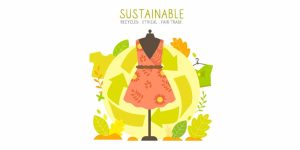Project-Based Learning: Preparing for the Real World

Let us rejoice! Indian Education in 2025 is no longer confined to chalkboards, textbooks, or rote memorization.
Classrooms are transforming into dynamic spaces where learners actively explore problems, collaborate on solutions, and present outcomes that mirror real-world challenges. And at the centre of this shift lies project-based learning (PBL), an approach gaining momentum in schools across India.
With the National Education Policy (NEP) 2020 emphasising critical thinking and creativity, and CBSE mandating more interdisciplinary projects, India is steadily moving towards a model where students are not just passive recipients of information but creators of knowledge. But what is project-based learning, how does it benefit students, and how are countries around the world leading the way?
What is Project-Based Learning?
Project-based learning is a teaching method in which students gain knowledge and skills by working over an extended period of time to investigate and respond to a real-world question, problem, or challenge. Instead of memorising concepts for exams, learners engage in hands-on projects that require them to apply classroom knowledge in practical ways.
How PBL differs from traditional classroom projects
Unlike traditional assignments, projects in PBL are interdisciplinary, student-driven, and often result in a tangible product or presentation. For example, students may design a sustainable water filtration system, create a documentary on local history, or develop a business plan for a community enterprise.
Key Elements of PBL
Challenging questions and real-world problems
The elements of PBL set it apart from conventional project work. According to global frameworks and CBSE guidelines, students start with a real-world issue that sparks inquiry.
Student voice and collaboration
Learners make decisions about how to approach projects and often work in groups, reflecting workplace collaboration.
Reflection and public presentation
Students evaluate what they have learned, refine their process, and present their findings to peers, teachers, or the community.
These elements ensure that PBL is not simply “doing a project” but rather a structured learning experience that prepares students for the complexities of adult life.
Benefits of Project-Based Learning for Students
Critical thinking and creativity
The benefits of project-based learning for students include developing problem-solving and innovation skills by applying knowledge to authentic challenges.
Collaboration and communication skills
Group projects build teamwork, leadership, and communication abilities.
Real-world relevance and confidence
Students learn how academic concepts apply in everyday life and gain confidence through presentations and public engagement.
A UNESCO report on future-ready skills highlights that project-based approaches develop “resilience, adaptability, and lifelong learning,” all of which are vital for the workplace of tomorrow.
Global Pioneers of Project-Based Learning
United States – High Tech High and New Tech Network
The US is widely regarded as the birthplace of modern project-based learning, influenced by progressive educator John Dewey. Schools like High Tech High in San Diego are internationally recognised for their immersive projects.
Finland – Phenomenon-based learning
Finland embraces phenomenon-based learning, integrating subjects into thematic projects, such as those related to climate change. Students design solutions collaboratively, guided by teachers as facilitators.
Canada – Community-driven projects
In provinces like Ontario and British Columbia, projects often address community issues—for example, creating awareness campaigns for local charities.
Singapore – Applied learning programmes
Singapore’s applied learning programmes embed innovation-driven projects into the curriculum, aligning with national goals in science and technology.
Australia – Inquiry-based curriculum
Australian schools focus on inquiry and project-based models that tackle local challenges, such as building robotics prototypes or environmental initiatives.
CBSE Project-Based Learning in India
In India, the CBSE project-based learning framework promotes art-integrated and multidisciplinary projects. NEP 2020 emphasises experiential pedagogy, encouraging learners to apply theory in practice.
Examples of CBSE project work in classrooms
Projects may include analysing household energy use to propose renewable alternatives or documenting oral histories from local communities. According to their own blog, at G.D. Goenka Public School, Dehradun, students have worked on several innovative projects that have enhanced their learning experience. Some examples include:
STEM-Based Projects, where students designed eco-friendly models for sustainable energy solutions
Social Awareness Campaigns, where learners created campaigns addressing social issues like pollution and climate change.
Entrepreneurial Projects, where senior students worked on business models, promoting financial literacy and entrepreneurial skills.
Role of Project-Based Learning Technology
Virtual labs and simulations
Project-based learning technology, such as digital science labs, enables students to conduct experiments virtually, thereby extending access to those without physical resources.
Collaboration platforms and digital tools
From Google Workspace to 3D design software, technology enables students to collaborate, research, and present projects more effectively.
Benefits of PBL in the Indian Context
Employment readiness
PBL addresses the skills gap by equipping students with workplace-style problem-solving skills.
Inclusion and accessibility
Customisable projects ensure students of all abilities can participate meaningfully.
Global citizenship and SDG-based projects
Indian schools are increasingly encouraging projects linked to the UN Sustainable Development Goals, helping students become responsible global citizens.
Preparing Students for the Real World
The ultimate aim of project-based learning is to prepare students for real-world challenges. By practising teamwork, applying knowledge, and solving authentic problems, students graduate not just with marks but with the ability to thrive in higher education, careers, and civic life.
As India positions itself as a global innovation hub, project-based learning is not optional; rather, it is an essential aspect for building the thinkers, creators, and leaders of tomorrow.
Billabong High International School has established itself as a progressive institution that values activity-based and experiential learning models. According to its official website, the school’s curriculum is designed to “move away from rote learning and focus on concept clarity through real-life applications.” Students are encouraged to explore, research, and present projects that develop both subject expertise and life skills.
By integrating project-based learning activities into its everyday teaching practices, Billabong High ensures that learners are equipped with critical thinking, creativity, and problem-solving skills. The school’s emphasis on holistic education makes it a strong example of how Indian schools can embrace global best practices while staying rooted in local needs.













